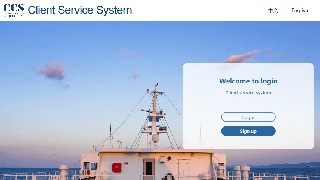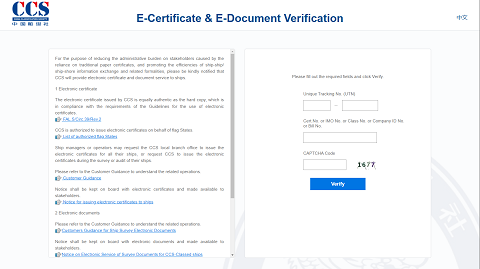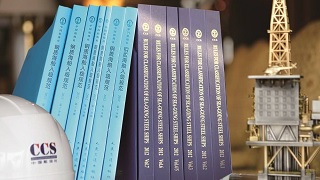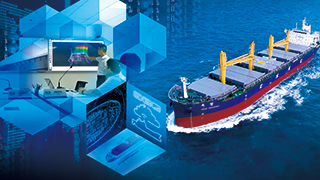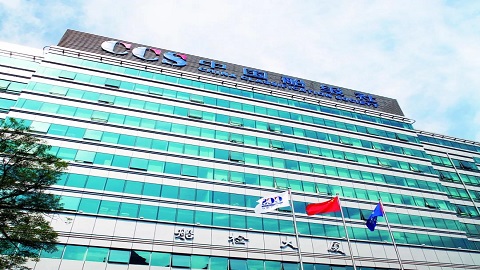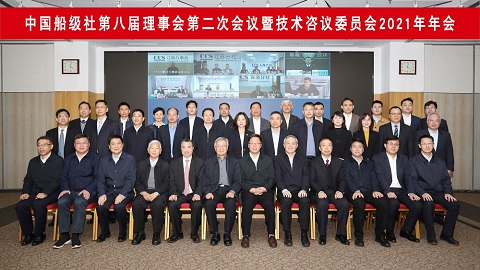METE is a service product launched by CCS in 2007 on the basis
of traditional classification services, which aims to improve the level of ship
safety operation and management, provide value-added services to core
customers, and attract and develop potential customers.
Based on the analysis and summary of the frequently encountered
problems by ship management companies in the daily inspection, maintenance and
repair of operating ships, and combined with modern data information analysis
and management methods, METE aims to better meet the actual needs of ship
management companies. METE consists of four elements:
1) 3D Modeling Based Planned Maintenance Schemes for Hull
(Maintenance)
2) Goal Oriented Structural Strength Evaluation for Hull
(Evaluation)
3) Training on Hull Structure Inspection and Maintenance
(Training)
4) CCS Emergency Response Service (CCS-ERS)
The combination of English initials of the above four items is
"METE",
which as a word also has the meaning of evaluation and measuring.
Through the effective operation of the complete service system
(i.e. the "METE Plan") composed of the above four items, the ship
management company can keep abreast of the hull structure condition of the
fleet and make timely maintenance plans to ensure the safety of the hull
structure.
I. 3D Modeling Based Planned Maintenance Scheme for Hull
(Maintenance)
With the increasing prominence of ship safety issues and PSC
inspections, the inspection and maintenance of hull structures receive ever
greater attention from various parties. Planned inspection and maintenance of
the ship's hull structure and equipment can provide a comprehensive and
accurate grasp of the ship's structural condition, properly track and deal with
the ship's defects, formulate scientific and reasonable repair plans, reduce
the possibility of unplanned repairs affecting the normal operation of the ship,
fundamentally reducing the risk of the ship's operation process and increasing
the company's confidence in the ship's safety standard and reliability.
"METE 3DM ship inspection and maintenance management
system" is a part of CCS METE series service products, which is based on
3D ship model and provides auxiliary support functions for shipping companies,
classification societies and thickness measurement organizations to carry out
inspection and maintenance of ship hull structure.
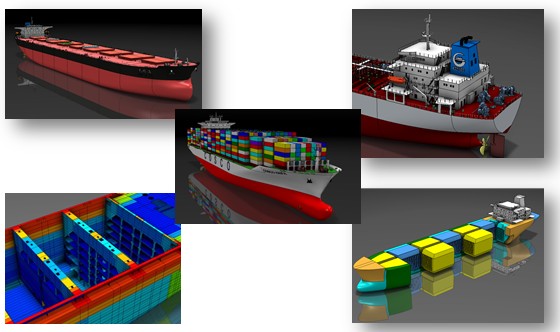
System characteristics
1. Simple operation and friendly interface
The system meets the management requirements
of the Planned Maintenance System (PMS) and conforms to the working habits of
CWBT, and users can quickly master the system's operation after simple
training.
Users can easily operate and manage the 3D
model of a ship through intuitive processing.
2. Comprehensive grasp of
ship conditions
With the help of 3D models, users can
visually query the structural details of the hull. From the smallest board beam
to the largest cabin structure size, maintenance records and repair status, all
of them can be entered and browsed through the system, which is convenient and
intuitive.
Managers can grasp the hull structure and
coating condition of the fleet at any time, meeting the needs of ship
management companies for refined management.
3. Operational inspection guidance based on expert experience
According to the customer's requirements, CCS
provides customized fleet hull maintenance system services and assists in
supervising the implementation of the system.
Based on the results of the structural
strength assessment and the inspection and repair history of the hull, CCS
identifies the key locations for the structural inspection of the hull and
provides the user with an intuitive and convenient inspection and maintenance
manual with the help of 3D technology. The system can easily generate the
inspection work order and print out the assessment report with pictures and
texts.
4. Common platform for shipping companies, classification
societies, and thickness measurement agencies.
Shipping companies can share the
classification society's inspection results to fully grasp the ship's condition.
Classification societies and shipping
companies can conveniently query, count and analyze the thickness measurement
data.
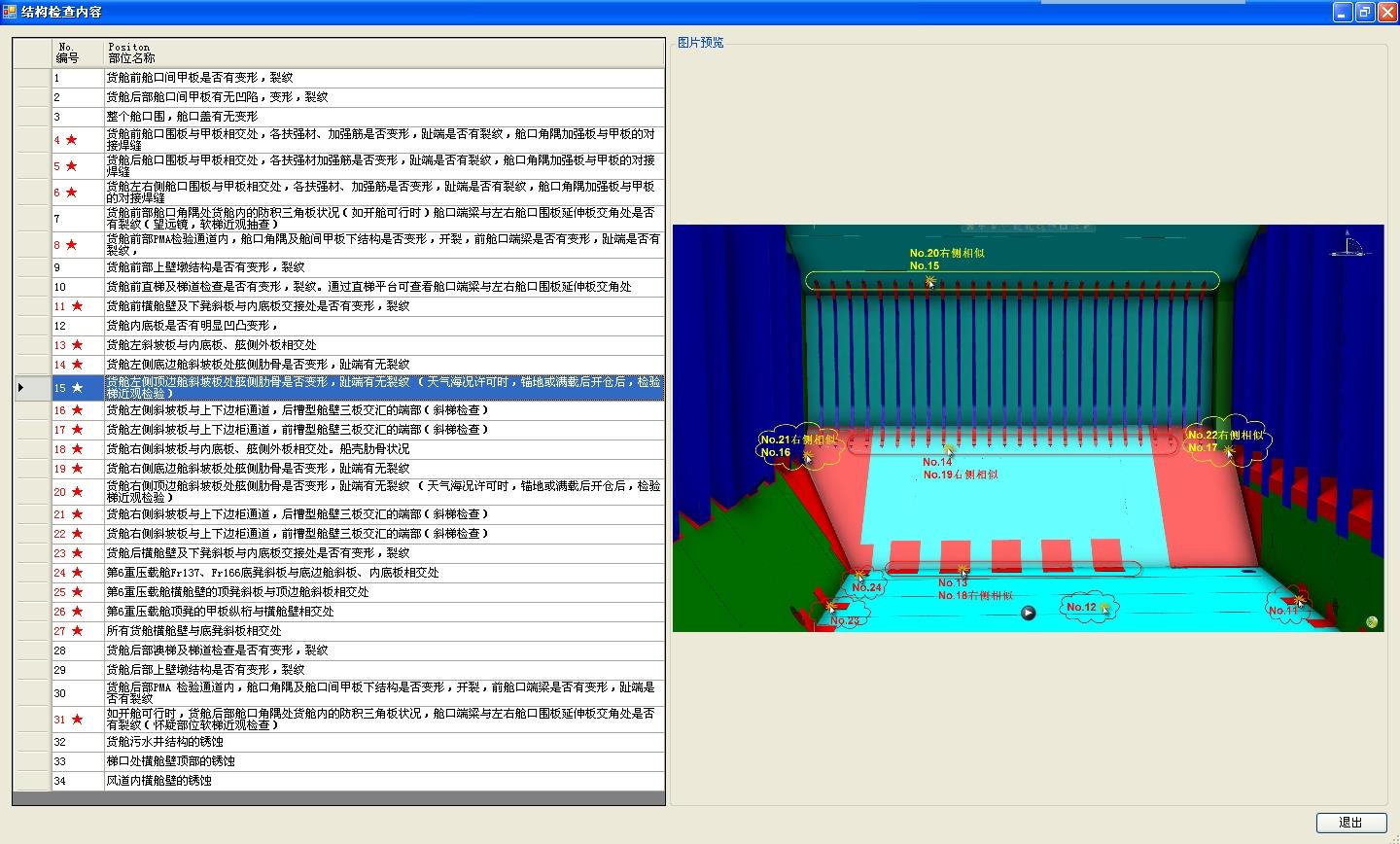
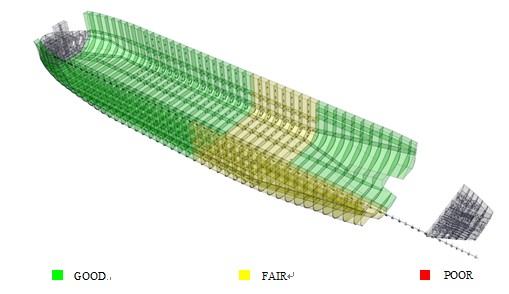
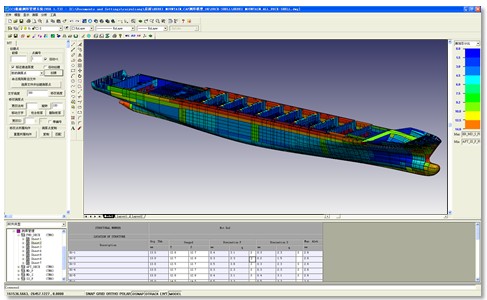
System functions
1. Planned inspection and maintenance
Based on the structural condition of the hull
and the maintenance system required by the ship's class and statutory
inspection, the software guides the crew to perform daily maintenance checks to
avoid unplanned repairs affecting the normal operation of the ship.
It can formulate a voyage maintenance plan
for PSC inspection to reduce the risk of stranded PSC.
It can effectively track and manage the
implementation of the maintenance plan.
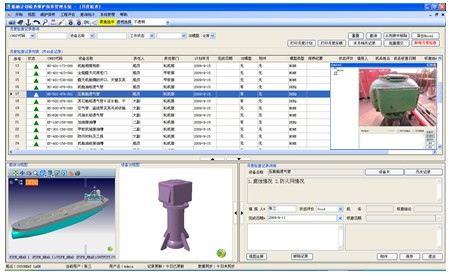
2. Inspection of cabin structure and coating condition
Customizable ballast tank and cargo tank
structure and coating inspection program ensures the timely detection of hull
structure and coating defects, and follow-up management of subsequent maintenance
and repair.
The system automatically generates the
structure and coating condition checklist for the crew to carry out targeted
inspections.
3D model-based structure and coating
condition map display automatically generates a detailed and illustrated inspection
result report for a clear view of the ship's structure condition.
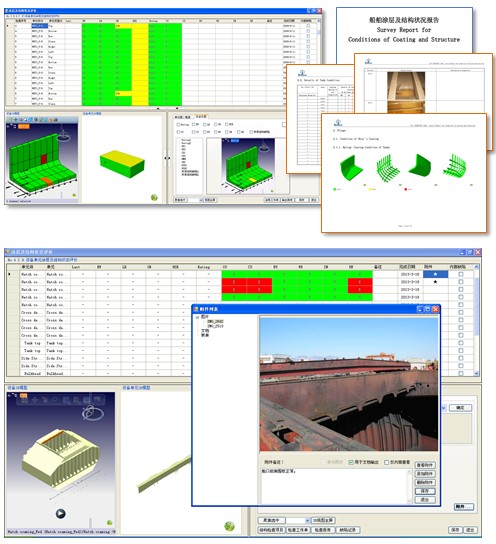
3. Ship defect and damage records
The software enables a detailed record of the
hull structural defects and damage information, ship-shore automatic
synchronization of damage information, and tracking of the treatment of
defects.
It helps the crew keep abreast of hull
structural damage and make repair plans in advance.
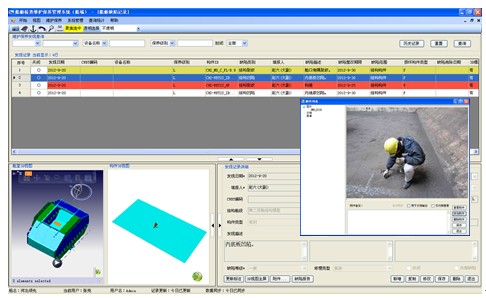
4. Painting and paint inventory management
Develop painting maintenance plans for decks,
outboards, superstructures, and other structures.
Track the implementation of the painting
plan, record daily painting data and estimate paint usage.
Monitor the implementation of the painting
plan based on a 3D cloud map.
Provide comprehensive management of paint
supply, consumption and other data, easy to track inventory.
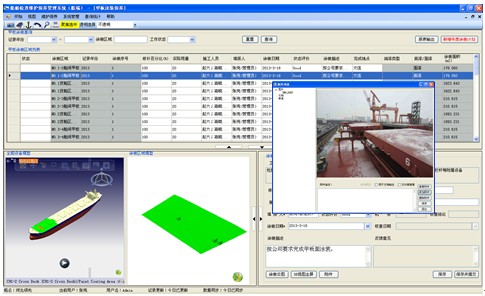
II. Goal Oriented Structural Strength Evaluation for Hull
(Evaluation)
Structural strength is one of the most important aspects of ship
safety, and among the shipwrecks in recent years, apart from human factors and
bad weather, a considerable percentage of shipwrecks were caused by
insufficient structural strength or structural damage to the hull. Therefore,
the structural strength of ships, especially large and old ships, has aroused
the general concern of the shipping industry.
As a shipping company, it is vital to keep track of the
structural strength status of its fleet of ships to maintain the company's safe
operating level.
Through structural strength assessments, the user can:
Assess the structural condition of ships
based on build dimensions and latest thickness measurements.
Provide a reference for engine/crew when
maintaining, servicing and repairing ships.
Guide the maintenance technicians / ship crew
to inspect the hull structure.
Provide a reference for corrosion control
during ship operations.
Accumulation of technical expertise and
provide a reference for shipowners to develop and select ship types in the
future.
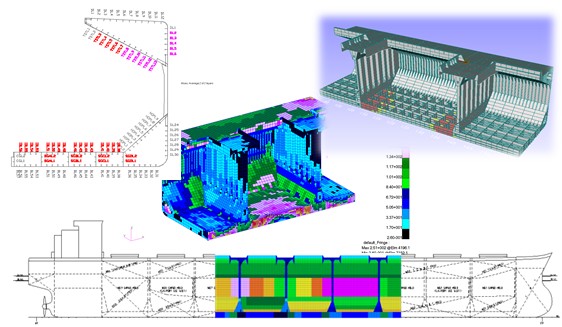
1. An in-depth reading of structural design and features
As part of the assessment, an in-depth reading and analysis of
the structural design of the subject is undertaken to understand the structural
design approach and thereby analyze its strengths and weaknesses;
structural layout and its laws;
material usage – material types and
distribution;
assessment and analysis of the
characterization of the location of the structure of the assessment area.
Structural interpretation and analysis also provides shipowners
with in-depth structural consulting information, which helps shipowners to have
an in-depth understanding of the characteristics and conditions of the target
vessel and the entire fleet, thus helping to arrange reasonable inspection,
maintenance and operation.
2. Provide reference for use, maintenance and repair of ships
After comprehensive calculations and analysis, it will be
possible to identify potential weaknesses and possible problems within the life
cycle of a particular ship. At the same time, based on the results of the
evaluation of build dimensions and thickness measurements, the original loading
pattern will be improved or limited accordingly to ensure that the total
longitudinal and local strengths meet the service requirements during the ship's
operation.
Through calculations and analysis, areas of insufficient
structural strength or high stress levels are identified and recommended to
shipowners and crews for priority attention in their daily
inspection/maintenance plans.
As a professional ship inspection organization, CCS has perfect
calculation software and leading finite element analysis tools in the industry
for the calculation and analysis of the structural strength of ships.
3. According to the characteristics of different ship types, structural
strength assessment and ship type studies mainly include the following
elements:
Strength evaluation and analysis of
structural code.
Calculation and analysis of direct strength
with structural finite element method.
Fatigue strength assessment.
Strength evaluation of real ship structure.
III. Training on Hull Structure Inspection and Maintenance
(Training)
Due to vessel development trends there is an increase in the
size and number of large ships and a consequent increase in the size of the crew,
the human factor is attracting more and more attention from IMO and shipping
companies who urgently require crew members and engine operators to acquire certain
knowledge of ship structure and maintenance.
Through many years of theoretical research and inspection
practice, CCS has prepared a series of training materials with reference to the
current situation of shipping and the key points of port state inspection, in
order to meet the work demands and fit the characteristics of the crew and
engine services. As part of the teaching coursework in this series, the
training on hull structure inspection, maintenance and repair includes the basic
knowledge of hull structure, the key points of structure inspection and the
handling of defects, etc. The coursework has been compiled to emulate the
actual situation of the engine service and crew, and is easy to understand and
effective in helping crew members master the control standards of hull
structure inspection and repair.
The training on hull structure inspe’sction, maintenance and
repair is conducive to improving the level of inspection, maintenance/servicing
of the vessel by the crew and engine services, thus improving the safety level
of the ship operation.
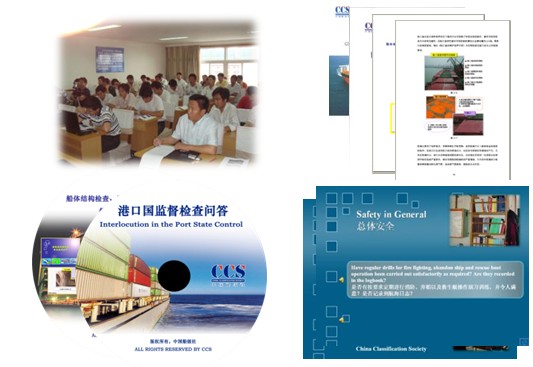
Training contents include:
Knowledge of hull structure
Basic knowledge of hull structure.
Knowledge of hull structure details and
strength.
Ship stability knowledge.
Classification and judgment standard of hull
structure defects.
Key points of hull structure inspection and
defect treatment.
Key points and quality control of routine
repair.
Standardized description of hull structure
damage.
Basic certificate systems and surveys of
ships.
Training is provided mainly in the form of lectures,
supplemented by computer multimedia materials.
IV. CCS Emergency Response Service (CCS-ERS)
Emergency Response Service (ERS) means that, for ships that are
included in the emergency response database, with related information on stability
and structural strength, and the ship owner / manager has signed an ERS agreement
in advance with the classification society, can get emergency response
assistance. In cases where a vessel has suffered a collision at sea, grounding,
oil spill, or other accident, then upon the request for assistance from the manager
or owner, a permanent shore-based emergency response agency, part of the
classification society, will quickly assemble, activate the ship's emergency
response database, provide calculations and analyses including breakage
stability, residual strength, oil spill, etc. as required by the shipowner/ship
management company. The ERS team can also provide round-the-clock technical
support throughout the emergency to assist with the successful assistance to a ship
in danger, and provide advisory services to inform the final decision of the
master/owner/ship management company.
In an emergency situation, the best measures to save the crew,
cargo and actions to protect the environment are not always obvious. Improper
handling of cabin water and oil spills caused by collisions, groundings, fires,
explosions or bad weather can make the situation worse. At sea, crews and their
managers need accurate technical information to mitigate the damaging effects
of an accident as quickly as possible. In such cases, a comprehensive
assessment of the ship's stability and total longitudinal strength is essential.
Exactly for the above-mentioned reasons, CCS-ERS has been established to
provide this technical support 24 hours a day, 7 days a week, 365 days a year.
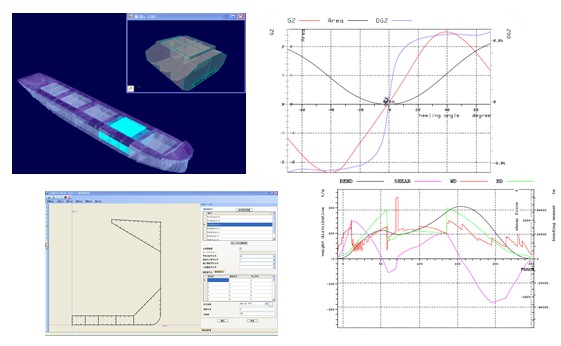
CCS-ERS functions include:
1. Fracture stability
and floatation analysis;
2. Residual total
longitudinal strength analysis;
3. Stranding stability and total
longitudinal strength analysis;
4. Damage and oil
spill assessment;
5. Assessment of the
stability of the integrity of the firefighting decks of passenger ships;
6. Provide emergency
treatment recommendations to maintain minimum stability and safe hull strength.
For more
information, please contact:
METE
Project Team of China Classification Society
Tel: 0086-10-58112058
Mailbox:scs@ccs.org.cn

